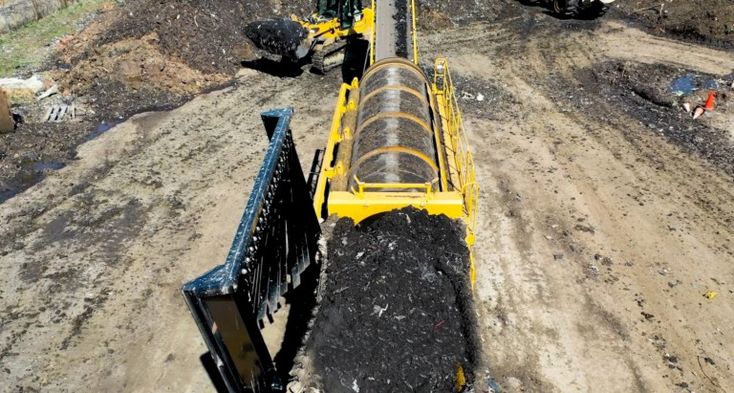Effective waste management is crucial in feedlots to minimize environmental impacts and ensure compliance with regulations. Here are some common practices and technologies used in feedlot waste management:
- Manure Storage and Treatment:
Feedlots typically have manure storage facilities, such as lagoons or anaerobic digesters, to collect and store manure. These storage structures help contain and control the waste, preventing runoff and leaching into the environment. Some feedlots also implement manure treatment systems, such as solid-liquid separation or composting, to further process the manure and reduce its volume and potential odor.

- Nutrient Management:
Proper management of the nutrient content in manure is essential to prevent nutrient overload in soil and water bodies. Feedlots employ various strategies to manage nutrients, such as land application of manure as fertilizer, precision application techniques to target specific areas with nutrient needs, and nutrient management plans based on soil testing and crop nutrient requirements. These practices help optimize nutrient utilization and minimize environmental impacts.

- Runoff and Erosion Control:
Feedlots implement measures to control runoff and prevent erosion from manure storage areas and feeding areas. These measures may include vegetative buffers, containment structures, and diversion channels to direct runoff away from sensitive areas. Proper grading and drainage systems are also important to minimize the risk of runoff and erosion.

By the way you should Note that our company can help you to start by giving you all the necessary information you need to get started if not yet in the business. Please check our online shop, we have all the standard business proposals for different capacities at very a cheap price made by the best agricultural specialists as well as Standard design plans that are made by the best agricultural architects around the globe. please visit our online shop now using the links below to witness by yourself
Design plans (FARM HOUSE DESIGNS – Kimd Construction & Farm Consultants)
Business plans (BUSINESS PLANS & PROPOSALS – Kimd Construction & Farm Consultants)
Welcome back from visiting our shop, hope you have placed your order for any of our products or you can place it after navigating more of our informative articles.
So let’s continue with our article!
- Odor Control:
Feedlot waste can generate odors that can impact nearby communities. To address this issue, feedlots employ various odor control technologies and practices. These may include biofilters, manure covers, windbreaks, and odor-neutralizing agents. Additionally, proper manure management practices, such as regular removal of manure from pens and proper storage and treatment, can help reduce odor emissions.

- Water Management:
Effective water management is essential in feedlots to prevent water contamination and ensure proper disposal of wastewater. Feedlots implement strategies such as collecting and treating runoff water from feeding areas, implementing sedimentation basins or settling ponds to remove solids, and employing water recycling systems to minimize water usage and wastewater generation.

- Compliance with Regulations:
Feedlots must adhere to local, state, and federal regulations regarding waste management. These regulations outline specific requirements for waste storage, treatment, and disposal. Feedlot operators must stay informed about the applicable regulations and implement appropriate practices to maintain compliance.

- Research and Innovation:
Ongoing research and innovation play a vital role in improving feedlot waste management practices. This includes the development of new technologies, such as anaerobic digesters, that can convert manure into biogas for energy production. Continuous improvement and adoption of innovative waste management practices help feedlots minimize their environmental footprint and enhance sustainability.

It is important for feedlot operators to regularly assess their waste management practices, stay updated on emerging technologies and best management practices, and collaborate with experts and regulatory agencies to ensure effective waste management and environmental stewardship.




